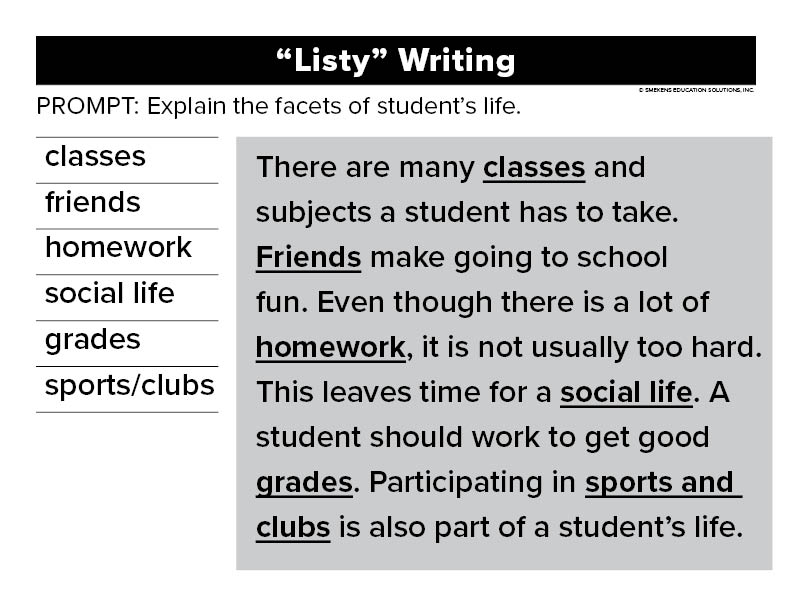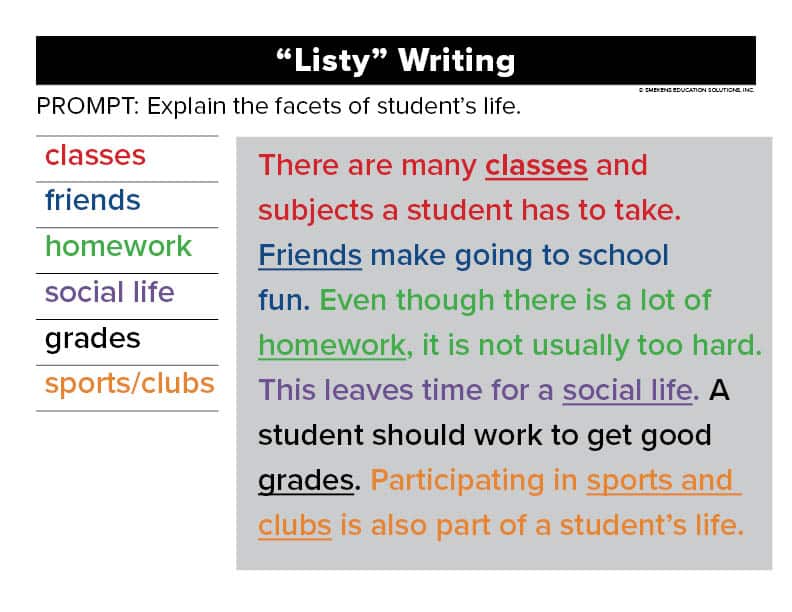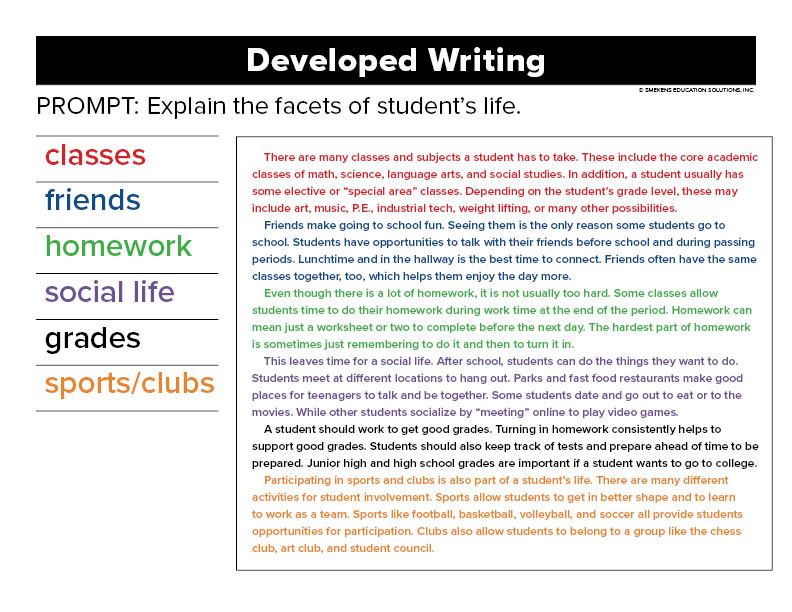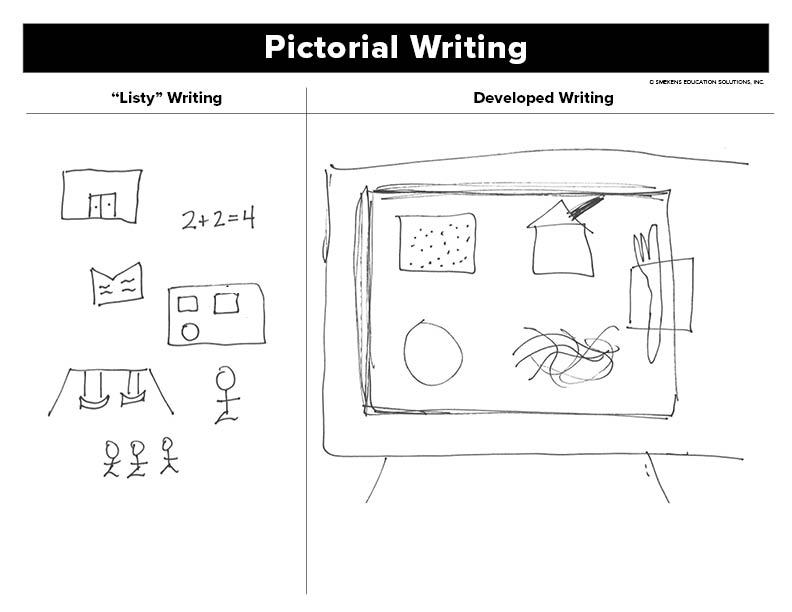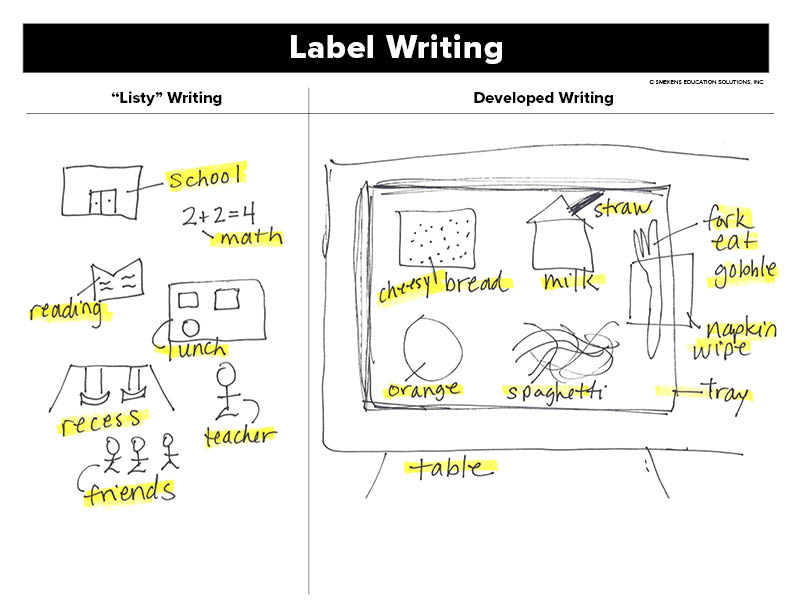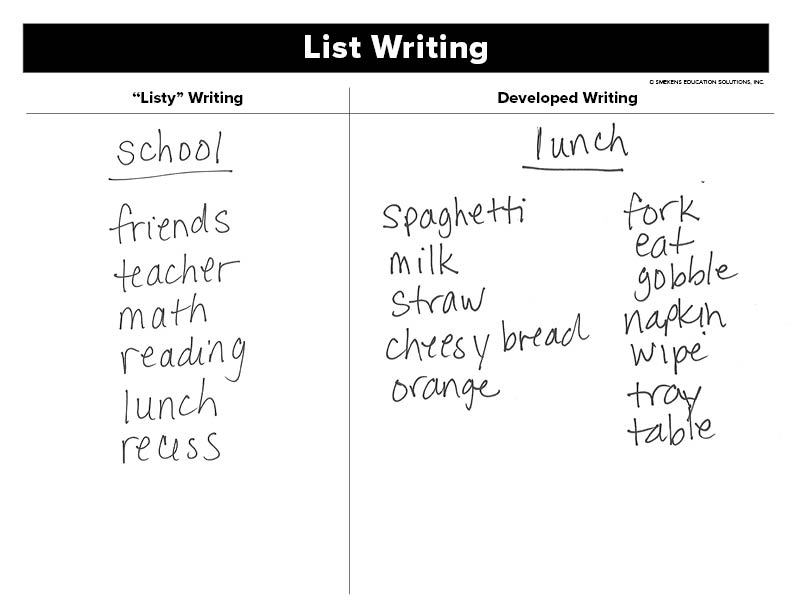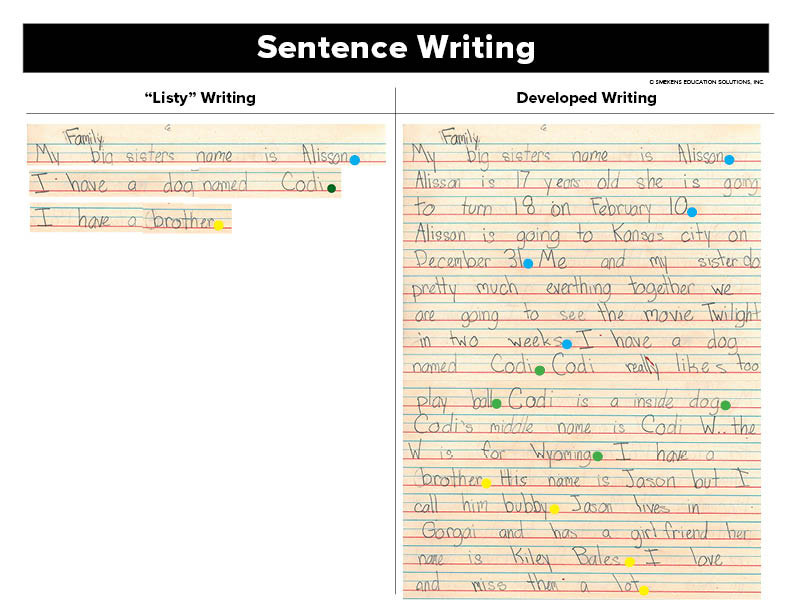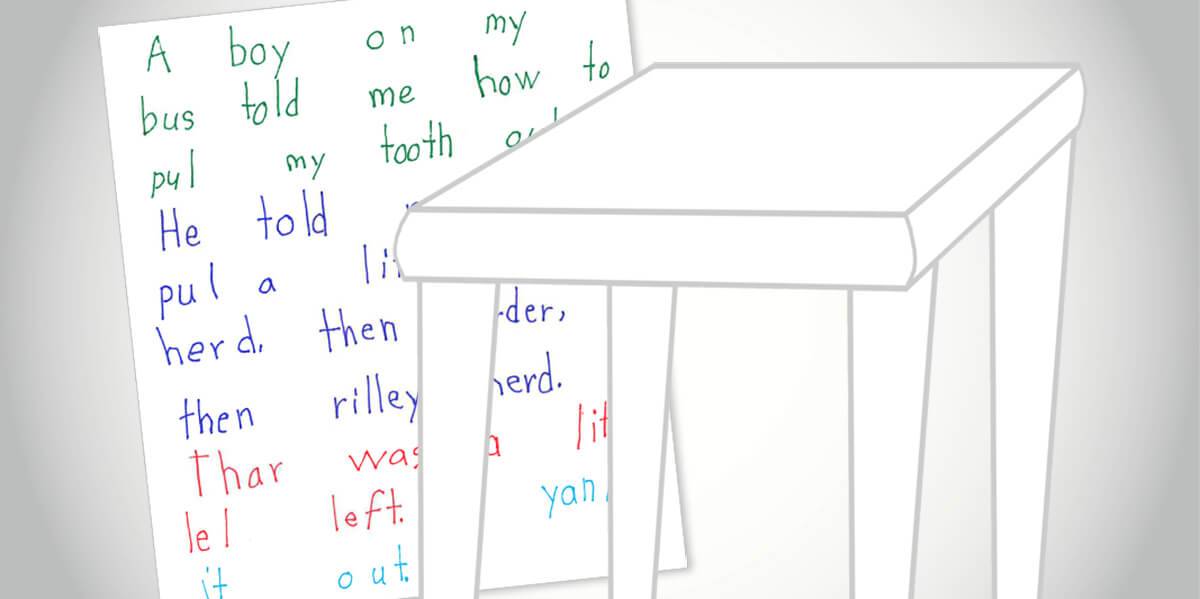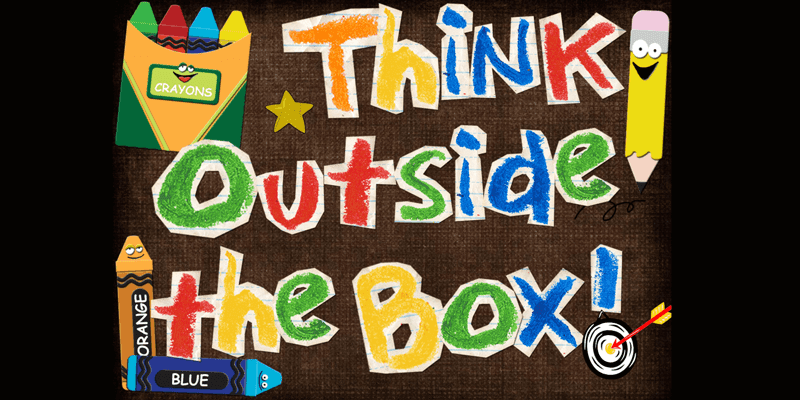Learning Center
writing
Overcome “listy” writing with idea development
november 15, 2022
Long writing does not necessarily equate to strong writing. As we encourage students to write more, add details, and make their pieces longer, we must distinguish between writing that is long and “listy” versus that which is long and developed.
Understand the difference
When starting a new piece, it’s common to generate a pre-write that lists the important points. That pre-write is then used to generate a first draft. This is when most students will fall into the trap of taking each item on the list and plopping it into the piece as a stand-alone sentence.
This is the listy writing we want to avoid — when the author stretches each big idea into a vague sentence and then stacks them one after another. And no matter how many important points are mentioned, this type of writing produces a weak product.
Define the development
Combat this common writing problem by first teaching students the meaning of “development.” Telling students to simply “add more details” is easily misconstrued as “tack on more loosely related sentences.” Help students understand that the term development means that the additional sentences will say more about what was mentioned—that these sentences will be inserted among the sentences already written.
This is true for the youngest writers, too. This kindergartner’s writing skills aren’t going to improve by simply adding more things that he likes about school. He is ready for his teacher to teach him how to develop each idea.
Illustrate the difference
One way to visually depict the difference between listy writing and developed writing is by using color. Assign a color to each pre-write idea as its corresponding sentence(s) in the draft. They understand that every idea written or drawn is a great topic sentence—for a paragraph that was never written!
Now, show them what developed writing on the same topic looks like. Emphasize that developed writing is longer, but more importantly, it’s also stronger. Each original idea was developed by adding more details– more related sentences.
This concept of idea development is relevant at every developmental writing stage. Do not wait until students are writing complete sentences to target this writer skill. When students are learning pictorial writing, label writing, and list writing, they can be narrowing their topic and adding small specific details.
Teach specific ways to develop ideas
Once students understand what a developed idea is, now your direct instruction focuses on teaching them how to develop an idea. Depending on the grade level and/or writing unit—roll out different types of details to include in supporting sentences (or labeled pictures).
- Develop informative or argumentative topics.
- Develop narrative topics.
- Develop pictorial-writing skills.
Be sure that your lessons include examples where you model stretching one important point into a single sentence, and then developing it with many supporting details.
Although many teachers presume these types of details are applied during revision, consider the potential if they were part of the pre-writing process. The goal would be for students to not only list the important points about a topic but also add smaller known details next to each one. Armed with this more thorough pre-write, now students compose stronger, longer, and better-developed first drafts.

